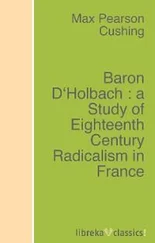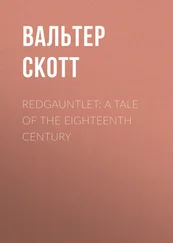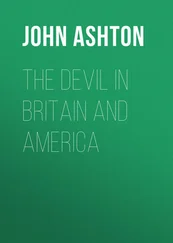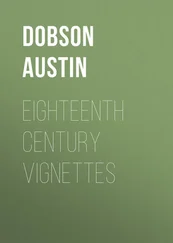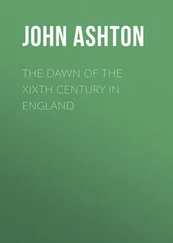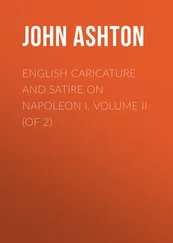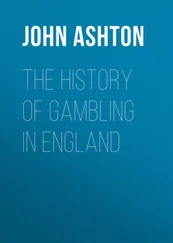John Ashton - Eighteenth Century Waifs
Здесь есть возможность читать онлайн «John Ashton - Eighteenth Century Waifs» — ознакомительный отрывок электронной книги совершенно бесплатно, а после прочтения отрывка купить полную версию. В некоторых случаях можно слушать аудио, скачать через торрент в формате fb2 и присутствует краткое содержание. Жанр: foreign_antique, foreign_prose, на английском языке. Описание произведения, (предисловие) а так же отзывы посетителей доступны на портале библиотеки ЛибКат.
- Название:Eighteenth Century Waifs
- Автор:
- Жанр:
- Год:неизвестен
- ISBN:нет данных
- Рейтинг книги:4 / 5. Голосов: 1
-
Избранное:Добавить в избранное
- Отзывы:
-
Ваша оценка:
- 80
- 1
- 2
- 3
- 4
- 5
Eighteenth Century Waifs: краткое содержание, описание и аннотация
Предлагаем к чтению аннотацию, описание, краткое содержание или предисловие (зависит от того, что написал сам автор книги «Eighteenth Century Waifs»). Если вы не нашли необходимую информацию о книге — напишите в комментариях, мы постараемся отыскать её.
Eighteenth Century Waifs — читать онлайн ознакомительный отрывок
Ниже представлен текст книги, разбитый по страницам. Система сохранения места последней прочитанной страницы, позволяет с удобством читать онлайн бесплатно книгу «Eighteenth Century Waifs», без необходимости каждый раз заново искать на чём Вы остановились. Поставьте закладку, и сможете в любой момент перейти на страницу, на которой закончили чтение.
Интервал:
Закладка:
‘It is, therefore, to be believed that the unworthy treatment, on the 4th, was offered to the corpse of Milton . Knowing what I know, I must not be silent. It is a very unpleasant story to relate; but, as it has fallen to my task, I will not shrink from it. I respect nothing in this world more than truth, and the memory of Milton ; and to swerve in a tittle from the first would offend the latter. I shall give the plain and simple narrative, as delivered by the parties themselves. If it sit heavy on any of their shoulders, it is a burthen of their own taking up, and their own backs must bear it. They are all, as I find, very fond of deriving honour to themselves from Milton , as their parishioner; perhaps the mode, which I have hinted, is the only one which they have now left themselves of proving an equal desire to do honour to him. If I had thought that, in personally proposing to the parish officers a general search for, and collection of, all the spoils, and to put them, together with the mangled corpse and old coffin, into a new leaden one, I should have been attended to, I would have taken that method; but, when I found such impertinent inventions as setting up a fabulous surgeon to creep in at a window practised, I felt that so low an attempt at derision would ensure that, whatever I should afterwards propose, would be equally derided, and I had then left no other means than to call in the public opinion in aid of my own, and to hope that we should, at length, see the bones of an honest man, and the first scholar and poet our country can boast, restored to their sepulchre.
‘The narrative will appear, I believe, either to-morrow or on Friday; whenever it does, your withers are unwrung, and Mr. Cole has shown himself an upright churchwarden.
‘I cannot conclude without returning you many thanks for your great civilities, and am, &c.’
The corpse was found entirely mutilated by those who disinterred it on the 17th; almost all the ribs, the lower jaw, and one of the hands gone. Of all those who saw the body on Wednesday, the 4th, and on Thursday, the 5th, there is not one person who discovered a single hair of any other colour than light brown, although both Mr. Laming and Mr. Ellis lifted up the head, and although the considerable quantity of hair which Mr. Taylor took was from the top of the head, and that which Ellis took was from behind it; yet, from the accounts of those who saw it on the 17th, it appears that the hair on the back of the head was found of dark brown, nearly approaching to black, although all the front hair remaining was of the same light brown as that taken on the 4th. It does not belong to me either to account for or to prove the fact.
On Wednesday, September the 1st, I waited on Mr. Dyson , who was the gentleman sent for on the 17th, to examine the corpse. I asked him simply, whether, from what had then appeared before him, he judged it to be male or female? His answer was that, having examined the pelvis and the skull, he judged the corpse to be that of a man. I asked what was the shape of the head? He said that the forehead was high and erect, though the top of the head was flat; and added that the skull was of that shape and flatness at the top which, differing from those of blacks, is observed to be common and almost peculiar to persons of very comprehensive intellects. I am a stranger to this sort of knowledge, but the opinion is a strong confirmation that, from all the premises before him, he judged the head to be that of Milton . On a paper, which he showed me, enclosing a bit of the hair, he had written ‘ Milton’s hair .’
Mr. Dyson is a surgeon, who received his professional education under the late Dr. Hunter , is in partnership with Mr. Price , in Fore Street, where the church stands, is of easy access, and his affability can be exceeded only by his skill in an extensive line of practice.
Mr. Taylor , too, who is a surgeon of considerable practice and eminence in his county, judged the corpse, on the 4th, to be that of a male.
A man, also, who has for many years acted as grave-digger in that parish, and who was present on the 17th, decided, upon first sight of the skull, that it was male; with as little hesitation, he pronounced another, which had been thrown out of the ground in digging, to be that of a woman. Decisions obviously the result of practical, rather than of scientific knowledge; for, being asked his reasons, he could give none, but that observation had taught him to distinguish such subjects. Yet this latter sort of evidence is not to be too hastily rejected; it may not be understood by everybody, but to anyone acquainted with those who are eminently skilled in judging of the genuineness of ancient coins, it will be perfectly intelligible. In that difficult and useful art, the eye of a proficient decides at once; a novice, however, who should inquire for the reasons of such decision, would seldom receive a further answer than that the decision itself is the result of experience and observation, and that the eye can be instructed only by long familiarity with the subject; yet all numismatic knowledge rests upon this sort of judgment.
After these evidences, what proofs are there, or what probable presumptions, that the corpse is that of a woman?
It was necessary to relate these facts, not only as they belonged to the subject, but lest, from the reports and papers above mentioned, I might, otherwise, seem to have given either an unfaithful or a partial statement of the evidences before me; whereas now it will clearly be seen what facts appeared on the first disinterment, which preceded, and what are to be attributed to the second, which succeeded the date of the narrative.
I have now added every circumstance which has hitherto come to my knowledge relative to this extraordinary transaction, and conclude with this declaration, that I should be very glad if any person would, from facts, give me reason to believe that the corpse in question is rather that of Elizabeth Smith , whose name I know only from her monument, than that of John Milton .
P. N.’‘8th of September, 1790.’
THE TRUE STORY OF EUGENE ARAM
The only knowledge which very many people possess of the life and crime of Eugene Aram has been derived from the popular romance bearing his name, written by the late Lord Lytton. And this nobleman, influenced by his individual bias, has so woven fiction with a small modicum of fact, as to render the story, as a history of a celebrated crime, totally unreliable. Stripped of the gloss Lord Lytton has given it, and revealed in its bare nakedness, it shows Eugene Aram in a very different light from the solitary scholar, surrounded by books, with high, romantic aspirations and noble thoughts, winning the love of a pure and lovely girl; it shows us instead a poor country school-master, clever, but self-taught, married to a common woman, whose very faith he doubted, struggling with poverty, and heavily weighed down with several children; it paints him as a man whose companions were sordid and dishonest, whilst he himself was a liar, a thief, and a murderer, a selfish man who scrupled not to leave wife and children to shift for themselves, a man untrustworthy in his relations of life.
Eugenius, or Eugene Aram was born in the year 1704, 23at Ramsgill, a little village in Netherdale, Yorkshire, and his father was a gardener, as he says, of great abilities in botany, and an excellent draughtsman, who served Dr. Compton, Bishop of London, and, afterwards, Sir Edward Blackett, of Newby, and Sir John Ingilby, of Ripley. When he was five or six years of age, the family removed to Bondgate, near Ripon, his father having purchased a little property there. Here he was sent to school, and was taught in a purely elementary manner to be capable of reading the New Testament, and this was all the education his parents gave him, with the exception of about a month’s schooling some long time afterwards with the Rev. Mr. Alcock of Burnsal.
Читать дальшеИнтервал:
Закладка:
Похожие книги на «Eighteenth Century Waifs»
Представляем Вашему вниманию похожие книги на «Eighteenth Century Waifs» списком для выбора. Мы отобрали схожую по названию и смыслу литературу в надежде предоставить читателям больше вариантов отыскать новые, интересные, ещё непрочитанные произведения.
Обсуждение, отзывы о книге «Eighteenth Century Waifs» и просто собственные мнения читателей. Оставьте ваши комментарии, напишите, что Вы думаете о произведении, его смысле или главных героях. Укажите что конкретно понравилось, а что нет, и почему Вы так считаете.

